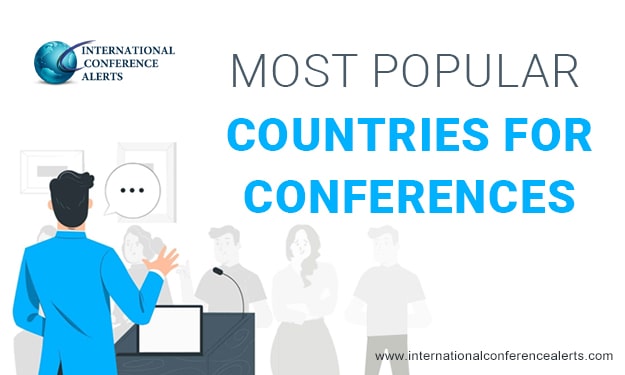How do I find a Conference for a paper publication?
- Newsletters Aren’t Always Spam, Particularly Those Of Recognized Conference Organizing Firms:
As soon as you’ve discovered specific research conferences that interest you and your research interests, you should take every opportunity to sign up for newsletters released periodically by these conference alerts. One can get all the important details they require in order to prepare for their upcoming international conferences, not only to inform themselves but also to enable them to be the source of information for their peers.
- The Internet & Conference Listings, Alerts Platforms Remain The Best Source Of Conference Info:
The best source to depend on when trying to find the right international conference is to look online. Searching online for the best research conferences in your discipline is a good way to start. Today, there are many conference alerts platforms that help attendees to find the conferences they want to attend. Using conference indexing portals such as International Conference Alerts, you can search for relevant conferences to get an idea of upcoming international research conferences in your field. After finding an international conference on this platform, keep following it to receive regular updates from the event organizers. You can also use the conference alerts that are on offer to find links to the conference website, conference organizer’s website, registration page, and any other information that you may need to complete registration or plan your participation.
How to Publish a Research Paper in Scopus Indexed Journal?
The road to publication can be confusing when you’re not sure what’s going on with your research paper. The below-highlighted steps will help give you an idea of the process that you will have to adhere to if you want your research paper to get published in a scopus-indexed journals.
Step #1
Editorial Reviews In-House
When an international journal first receives a submission, there are usually two separate checks to confirm that the article is appropriate and ready for peer review –
Fact-Checking
Performed by a technical editor to ensure the submission has been completed correctly and is ready for further evaluation. Fuzzy numbers, missing ethical statements, and incomplete author affiliations are common issues that are addressed at this initial stage. Normally, three technical assessments are carried out –
at initial submission,
alongside the first decision letter, and
at acceptance.
Regular Checks
After a manuscript passes the first check, a subject editor evaluates the article and determines whether the manuscript is in fact within the scope of the journal and if it could potentially meet the required publication criteria. Although there may be requests for additional information and minor edits from the author if necessary, the article will either be rejected by the editor or allowed to proceed to peer review.
Step #2
Peer Reviewing
Depending on the editorial structure of the journal, the editor who carried out the initial assessment may also oversee the peer review or another editor with more specific expertise may be appointed. Regardless of the specific review process, the different roles and responsibilities during peer review include –
- Revisions Requested To The Manuscript
The editors evaluate the peer reviewers’ comments and their own expert evaluation of the manuscript to make a decision. Once your editor submits a decision on your manuscript, the journal may review it before formally processing the decision and sending it to you. A technical writer can scan the manuscript and journal comments to ensure that journal standards have been met. At this point, the technical editor will also add requests to ensure that the article, if published, will meet the journal’s requirements for data sharing, copyright, ethical reporting, etc.
- Submission After Making All Required Revisions
Upon receipt of your revised submission, a technical editor will evaluate the revisions to confirm that the journal requests have been properly addressed. Before the article is returned to the publisher for review, the journal must be sure that the article will not have any metadata and reporting standards issues that could hinder publication. The editor may get in touch with you to resolve any serious issues, although minor items may wait until the article is accepted.
- The second Peer Reviewing Process Occurs
When your resubmitted article has passed the required checks, it will be assigned to the same editor that processed it in the first round of peer review. At this point, your article has gone through two rounds of journal checks and one round of peer review. If everything has gone well thus far, the document should look pretty solid both in terms of scientific content and proper reporting standards.
Step #3
Initial Acceptance Of The Manuscript
Once the editor of the journal is satisfied with the scientific quality of your work, he/she will agree to accept it in principle. Before production and typesetting can proceed, the journal office will perform its third and final technical check, requesting any formatting changes or additional details that may be required.
Step #4
Final Publication
At this stage, your research paper is formally accepted, and you and your co-authors can celebrate the fact that your articles are accepted. Your article will be published as soon as the journal transforms the submission into a coherently composed and structured scientific manuscript, ready to be read and cited by your peers.



I believe this is one of the such a lot vital information for me. And i’m satisfied studying your article. But want to remark on some common issues, The web site style is wonderful, the articles is truly excellent : D. Good activity, cheers